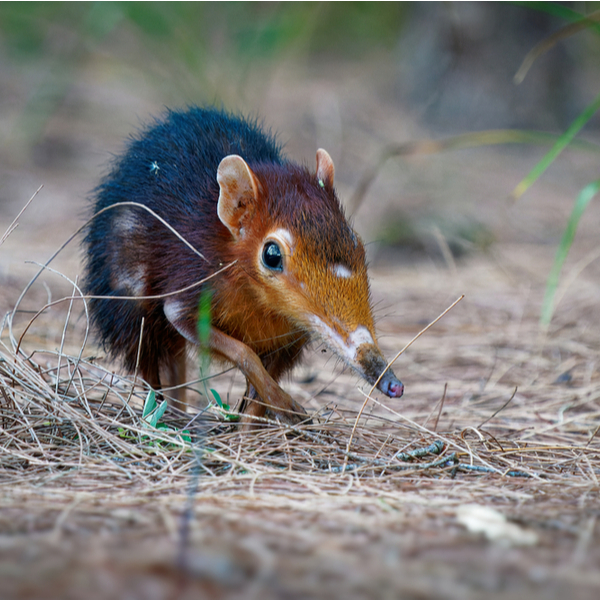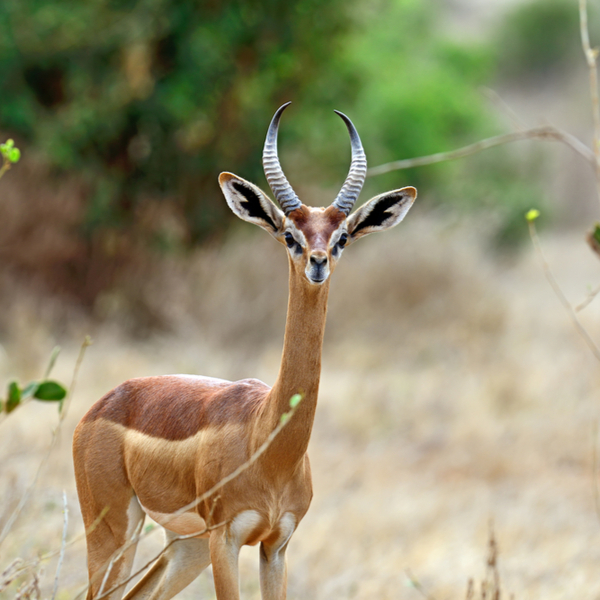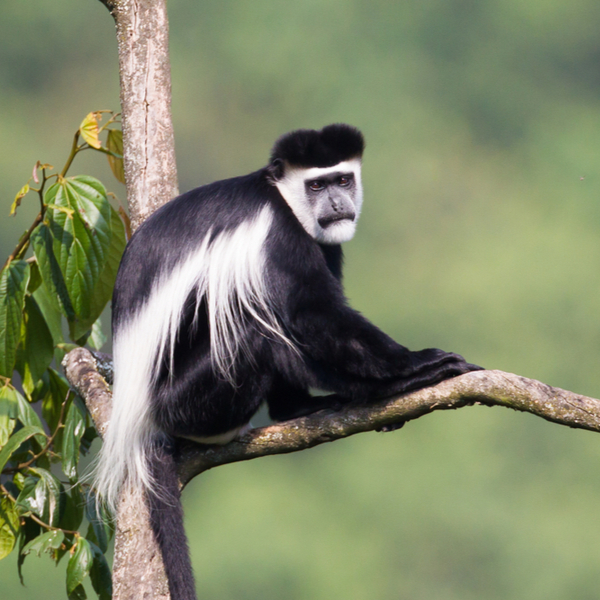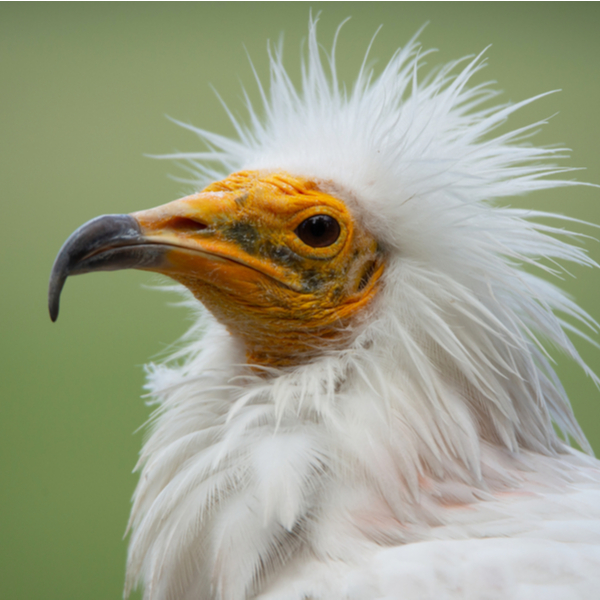In Kenya, animals do tend to be grouped in 5s. Big 5, Small 5, the other Big 5 and the Big 6. Ok, that last one is the exception to the rule. But you get the Kenya wildlife picture here. Kenya’s diverse eco-system is home to a huge number of animals. So it makes sense to have a system. Incredible wildlife spotting opportunities are never far away and everything from big predators to fierce but tiny insects are waiting to be spotted. But in this African wilderness, it pays to keep your eyes peeled for animals that don’t fall under that Big 5 umbrella.
The Big 5
We can’t cover Kenya’s animals without talking about the Big 5. Lions, elephants, cape buffalo, leopards and rhinos are THE reason most of us book Kenya safari holidays. You’ll need to cover various terrains to spot them all. Leopards prefer dense forest to prowl and hunt through, while the rest can be spotted in Kenya’s grasslands. In conservation terms, elephants, lions and leopards are all classed as vulnerable – though only the elephant population is increasing. Rhinos are critically endangered – and the hardest to find. Though, thanks to a serious push to save the species, numbers in Kenya are on the up.


The Small 5
With all eyes straining to see Kenya’s Big 5 on the horizon, it’s easy to miss the small stuff. But there’s a fun fact about Kenya you might want to check out. For every animal on the Big 5 list, there’s a mini-namesake to hunt down. Though, rhino beetles, leopard tortoises, buffalo weavers, ant lions and elephant shrews might even be harder to find than their counterparts. Especially the elephant shrew. Keep an eye on the trees for the buffalo weavers elaborately messy nests and be thankful ant lions are so small. The intriguing insects have learned to build traps for their prey…
Kenya’s Big 6
You can trot across a few African savannahs and see the Big 5. But you’ll only see Kenya’s Big 6 in… well, Kenya. There are 6 endemic – and rare, species you should pop on your Kenya wildlife checklist. Reticulated giraffes, Grevy’s zebras, and the Somali ostrich could all be filed under interesting, but familiar. Not an accusation you could ever throw at the the Gerenuk, Beisa oryx, or Jackson’s Hartebeest. Of the three? The Gerenuk is the most intriguing. Essentially, an antelope with a long neck, the Gerenuk strikes a very exotic pose. Head to the north to track the six down. Elusive, they like to hang out in the more remote spots, but the thrill of the find will be more than worth it.


Kenya’s primates
Across Kenya’s reserves and national parks you’ll find a variety of primates. Look to the trees for forest dwellers, such as the Sykes Monkey. There’s twelve subspecies, but in Kenya, they are easily identified by their white collar of fur. The rainforests also provide a home for Vervet monkeys, the ideal place to find their diet of fruit, tree bark, flowers and seeds. Though they’re not picky, as they’ll go to ground for insects, eggs and even birds. The most striking primates? The Black and White Colobus monkeys have dark black coats with flowing white locks that come from two stripes along their backs. Shy and fast, they stay high up in the tree canopies. You’ll need to be determined, and patient to spot them. Primates to look out for on the savannah? Large troops of baboons forage for literally anything edible, in groups of up to 150.
Kenya’s other Big 5
Ok, ok, Kenya’s playing a little too fast and loose with their ‘5’ lists. BUT taking their theme and running with it here actually works. This time we’re heading out to sea to track down the country’s marine life. Yes, you can see whales, dolphins, rays, turtles and sailfish just about anywhere else, but have you seen Kenya’s coastline? Stunning. Add in the fact that Kenya’s waters are a stop in the humpback whale migration from Antarctica and a little whale watching definitely wouldn’t hurt during your stay. There’s smaller prey to be found inshore too. Snorkel trips to Watamu Marine Park could see you sharing flipper space with the resident turtles. Even if they elude you, the stunning damselfish, octopus and morays are just some of the 500+ species in these waters. The 100 types of coral are fairly easy on the eye too.


Birds of prey
Birdwatchers, Kenya will wow you with the number of opportunities to watch hundreds of species fly, peck and hunt their way across the country. Some of the largest, and easiest, birds to spot are the birds of prey. You’ll spot vultures wherever there’s been a kill. Though, with seven species to see, you’ll need a little helping hand from a field guide to know what you’re looking at. Though, the Egyptian vulture’s orange face makes it easier to identify. Keep your eyes peeled for the vibrant red beak and claws of the Bateleur eagle, along with Kenya’s kestrels, goshawks, harriers and falcons. For impressive hunting skills, head to Kenya’s glorious lakes to catch the African fish eagles in action. Watching them pluck fish from the waters with their huge talons is as impressive as watching a lion chase down its prey.
Orbzii tip: If you’re on a night safari, keep an eye on the skies. Africa’s largest owl, Verreaux’s Eagle Owl, will be on the look out for anything it can catch. Its prey includes shrews, hedgehogs, foxes and even vervet monkeys.
Kenya’s cats and dogs
Lions and leopards get most of the press in Kenya. But their Big 5 status draws attention away from the other felines stalking the savannah. Cheetahs are the next in line, with safari-goers keen to see the world’s fastest land animals stretch their legs. Living in their fleeting shadows, the smaller cats that deserve a little limelight though. Servals are slender cats with big ears and big attitudes. Caracals are a smidge bigger, and look much like a lynx, but also boast some pretty spectacular ears. The African wildcat will look awfully familiar to anyone with a cat at home. They might be a little bigger, but there’s no mistaking the resemblance.

And for dog lovers? You’ll be keeping watch for Africa’s wild dog packs. Around 8,000 dogs roam Africa, but the packs are fairly rare sightings in Kenya. For the best chance at spotting a pack, head to the Meru National Park or Laikipia County.



















